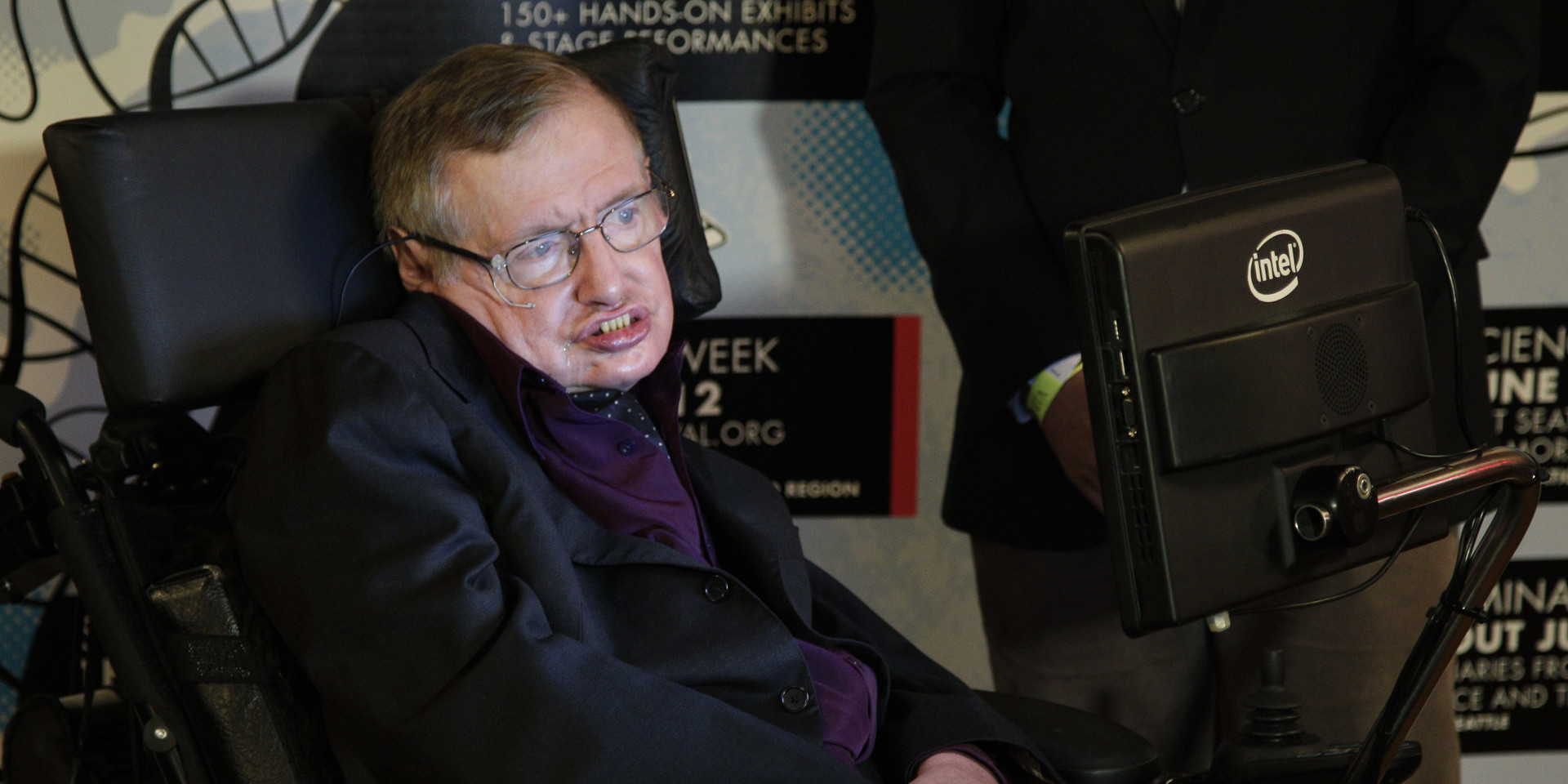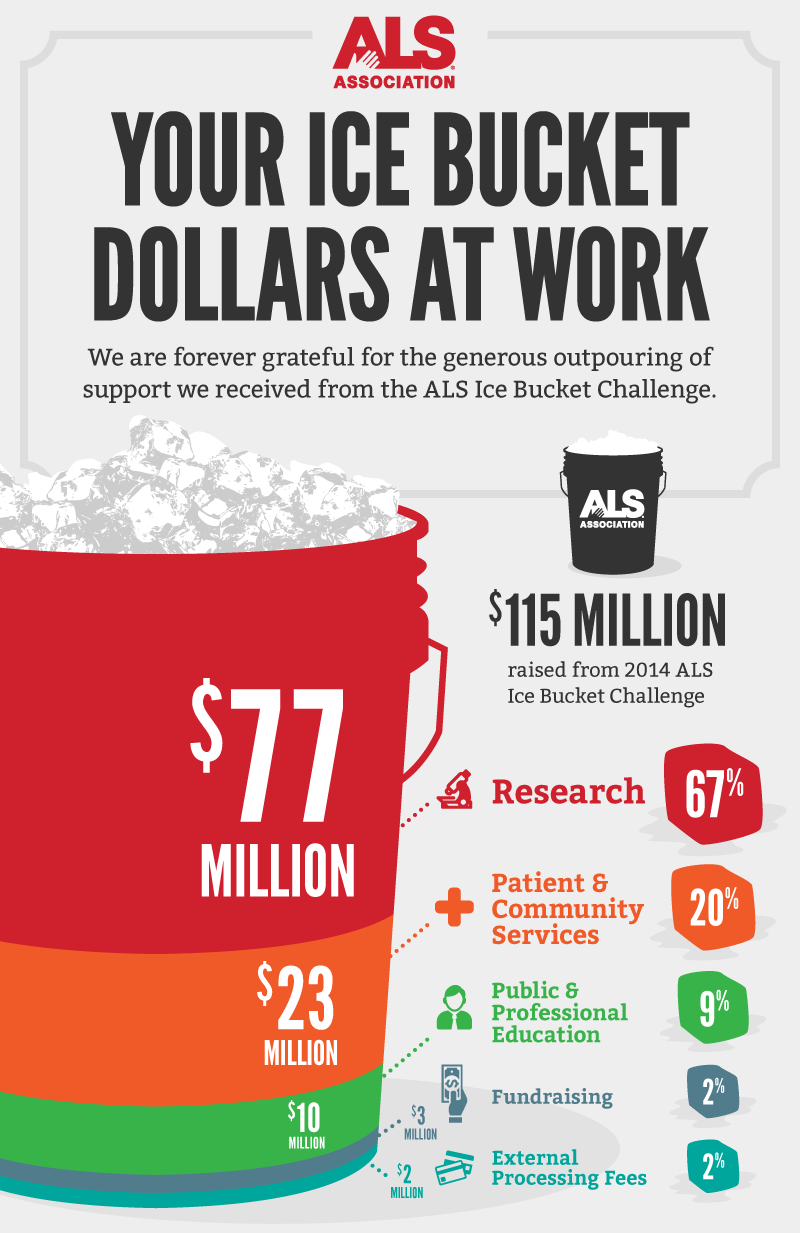Ice Bucket Challenge helped open the mutation
In 2014, about 17 million people took part in the flash mob, while the rest waited for the call and watched the buckets roll over with ice on youtube. Remember for what was a flash mob? Atlas is ready to give details.
')
Or motor neuron disease, Charcot's disease, Lou Gehrig's disease - the disease has many names, but the easiest way to remember it is from this photo.

ALS is a rare neurodegenerative disease that affects the motor neurons of both the brain and spinal cord. As the disease progresses, paralysis and atrophy of muscles, including respiratory, occurs. The disease usually develops in 3-5 years, but there are cases of stabilization of the state (Stephen Hawking).
The causes of the disease are still unknown, but after the research of the ALS Association , funded by the Ice Bucket Challenge, a rare mutation was discovered in the NEK1 gene, which increases the risk of developing ALS.
The action was launched by Pete Frates, an American baseball player who was diagnosed with ALS in 2012. In 2013, the same diagnosis was made to his friend Pat Quinn, the guys began to study the issue, and in 2014 they organized a flash mob.
High virality was provided by a simple mechanism for challenging to a duel: each participant posted a video, at the end of which he named the names of the three following participants. Those who dared to douche donated $ 10 to the disease research fund, those who escaped the ice shower - $ 100. As a result, 17 million people took part in the douche marathon, the total amount of charitable financing was 115 million dollars. Funds received ALS Association.

In addition to the crazy popularity, flash mob was accompanied by a wave of criticism . And yet now, after two years of research, the organizers have something to respond to the skeptics' claims.
Thanks to the funds collected during the flash mob, the MinE research project conducted a global study of ALS patients and identified a gene, a special version of which may indicate an increased risk of disease. At first, the inherited form of ALS was studied (about 10% of cases), then the results were tested on patients with the sporadic form of the disease and were confirmed.
The NEK1 gene is responsible for creating the serine / threonine kinase protein, which is involved in the regulation of the cell cycle and the formation of a response to DNA damage. Associated with ALS cases, both hereditary and accidental, is the p.Arg261His polymorphism , as well as the loss of gene functionality.
ALS - a complex multifactorial disease, which is associated with a preliminary assessment of 30 genes. The found mutation is associated with only 3% of cases of the disease, but nevertheless this discovery is important for the early diagnosis and search for treatment of the disease.
While scientists continue to work on finding answers, the Atlas genetic test team is testing the research results and is preparing to add a new trait to the interpretation. ALS is an incurable disease, so it will only be displayed for those users who request information on this mutation. This opportunity will be all users of the genetic test.
')
Amyotrophic lateral sclerosis
Or motor neuron disease, Charcot's disease, Lou Gehrig's disease - the disease has many names, but the easiest way to remember it is from this photo.

ALS is a rare neurodegenerative disease that affects the motor neurons of both the brain and spinal cord. As the disease progresses, paralysis and atrophy of muscles, including respiratory, occurs. The disease usually develops in 3-5 years, but there are cases of stabilization of the state (Stephen Hawking).
The causes of the disease are still unknown, but after the research of the ALS Association , funded by the Ice Bucket Challenge, a rare mutation was discovered in the NEK1 gene, which increases the risk of developing ALS.
Who arranged a flash mob
The action was launched by Pete Frates, an American baseball player who was diagnosed with ALS in 2012. In 2013, the same diagnosis was made to his friend Pat Quinn, the guys began to study the issue, and in 2014 they organized a flash mob.
High virality was provided by a simple mechanism for challenging to a duel: each participant posted a video, at the end of which he named the names of the three following participants. Those who dared to douche donated $ 10 to the disease research fund, those who escaped the ice shower - $ 100. As a result, 17 million people took part in the douche marathon, the total amount of charitable financing was 115 million dollars. Funds received ALS Association.

In addition to the crazy popularity, flash mob was accompanied by a wave of criticism . And yet now, after two years of research, the organizers have something to respond to the skeptics' claims.
What kind of mutation scientists have found
Thanks to the funds collected during the flash mob, the MinE research project conducted a global study of ALS patients and identified a gene, a special version of which may indicate an increased risk of disease. At first, the inherited form of ALS was studied (about 10% of cases), then the results were tested on patients with the sporadic form of the disease and were confirmed.
The NEK1 gene is responsible for creating the serine / threonine kinase protein, which is involved in the regulation of the cell cycle and the formation of a response to DNA damage. Associated with ALS cases, both hereditary and accidental, is the p.Arg261His polymorphism , as well as the loss of gene functionality.
What now
ALS - a complex multifactorial disease, which is associated with a preliminary assessment of 30 genes. The found mutation is associated with only 3% of cases of the disease, but nevertheless this discovery is important for the early diagnosis and search for treatment of the disease.
While scientists continue to work on finding answers, the Atlas genetic test team is testing the research results and is preparing to add a new trait to the interpretation. ALS is an incurable disease, so it will only be displayed for those users who request information on this mutation. This opportunity will be all users of the genetic test.
Source: https://habr.com/ru/post/369531/
All Articles